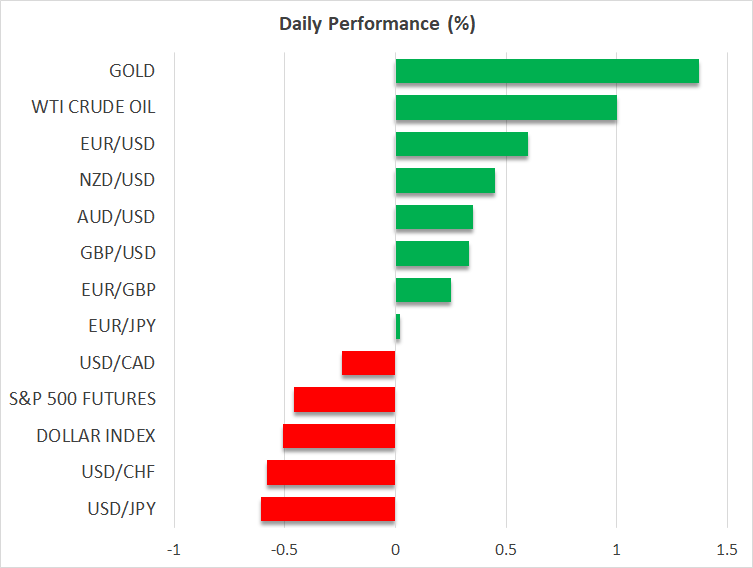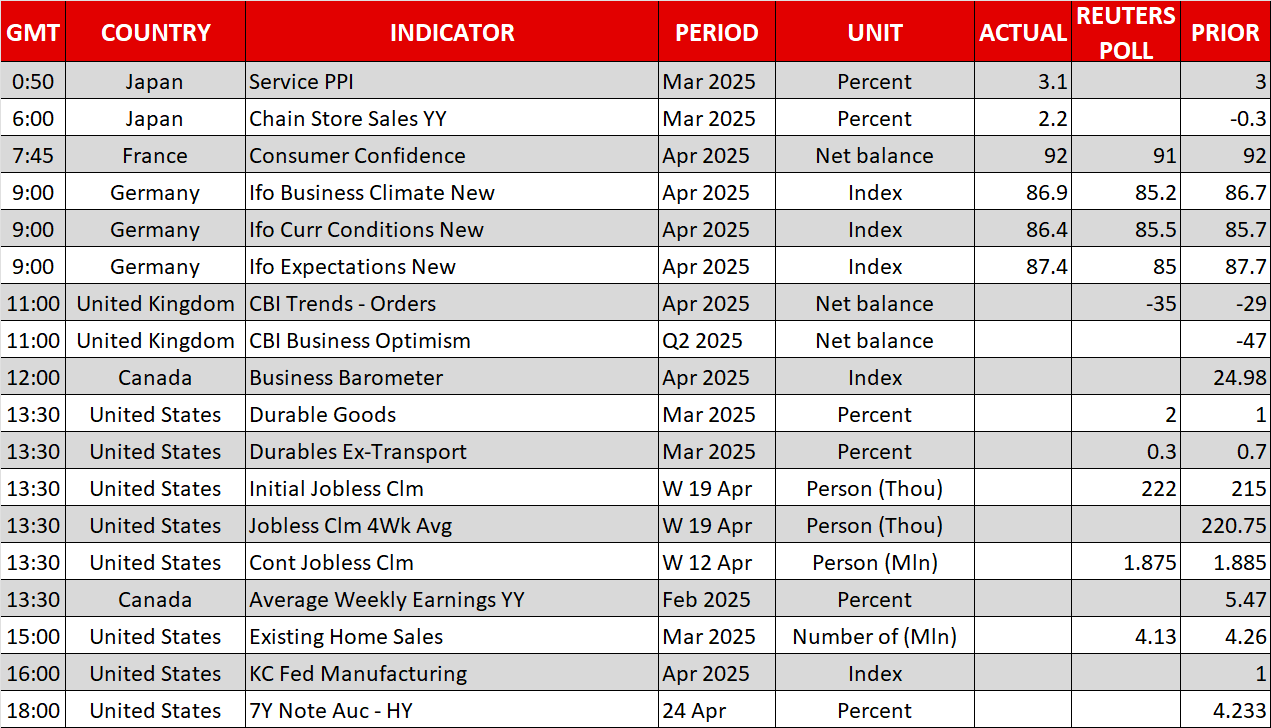- Trump sends mixed signals about tariffs again
- Improved risk appetite weakens, stocks surrender gains
- US data and Treasury note auction in the spotlight
- Both gold and oil struggle to find their footing
Trump Continues to Dictate Market Movements
Not even a hundred days into US President Trump’s second term and markets feel like they are riding an endless rollercoaster at the scariest amusement park, with Trump in charge of the controls. After a dreadful week, US stocks and the US dollar have been on the front foot for the past two sessions, benefiting from improved risk appetite, while gold suffered its strongest correction on record in nominal terms on Wednesday.
However, this positive sentiment does not appear to have legs, as Trump was once again quite vocal overnight. Despite hopes that he is preparing to close some of the many outstanding issues – with his trade representatives preparing for 14 meetings with foreign trade ministers - markets feel like they are battling the Lernaean Hydra like the mythical Hercules.
More specifically, overnight there were reports about tariff exemptions being in the works for car manufacturers. However, Trump quickly dismissed these stories, highlighting that the 25% tariff on cars from Canada could go higher, partly interfering with Monday’s Canadian Federal election. To make things even worse, White House sources also pointed to a new review of the import of trucks.

Is Trump Really Open to a Deal With China?
More importantly, Trump continues to focus on China. With tariffs from both sides in triple-digit territory, the US President appears to be genuinely interested in a deal that will benefit both countries. One could say that he is worrying about his plunging approval rating, others could point to pressure from both his closest advisors and business contacts to turn the sentiment around.
At the same time, though, he nearly threatened that unless China comes to the negotiating table soon, tariffs on Chinese imports might increase in the next two to three weeks.
However, the Chinese side is playing hardball. Whoever blinks first will have to make the biggest concessions, and based on the overall sentiment, Trump might feel less powerful at this stage than President Xi. The latest S&P Global PMI surveys were mixed, with the Manufacturing one remaining above the 50 threshold, but the Services component dropping like a stone.
Similarly, the latest edition of the Fed’s Beige Book was not pleasant reading since the outlook in several districts worsened considerably as economic uncertainty around tariffs rose. Realistically, businesses are starting to reexamine/postpone their investment plans, which is probably the opposite of what Trump was aiming for.
US Data and 7-Year Treasury Auction in the Spotlight
In this context, the March durable goods report will be released at 12:30 GMT. While the headline figure is expected to show a 2% rise, the core durable goods orders component that excluded transportation could deliver a downside surprise.
Equally important, the US Treasury is offering $44bn of the 7-year note today. Both the 2-year and 5-year auctions this week were weak, with domestic buyers forced to take a bigger share of the offering amount to cover for lower demand from indirect accounts, mostly from China.
Gold and Oil Recover Today; Bitcoin Remains Above $92k Level
While gold’s $200 correction in the past two sessions was not surprising following its recent exponential rise, with the precious metal now hovering around the $3,320 area, bitcoin ’s performance caught a few market participants off guard. A quick $10k price rise came amidst improving risk appetite, with the king of crypto now trying to maintain its recent gains.
Finally,
oil
is edging slightly higher today, recovering after the OPEC+ alliance apparently shot itself in the foot yesterday. Reports that several members of the alliance are seeking the approval of another accelerated oil output increase for June were not taken lightly by the market. With the global economy weakening, it sounds counterproductive to increase supply when oil demand is dropping.


